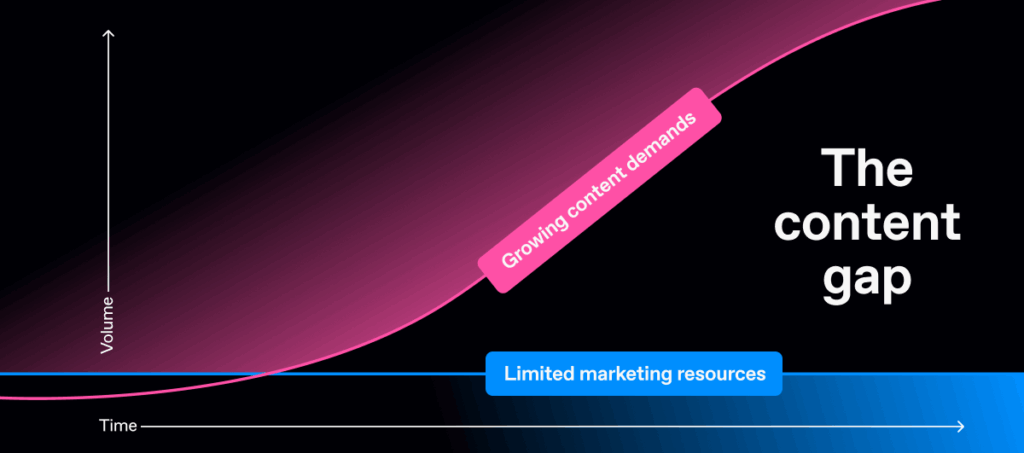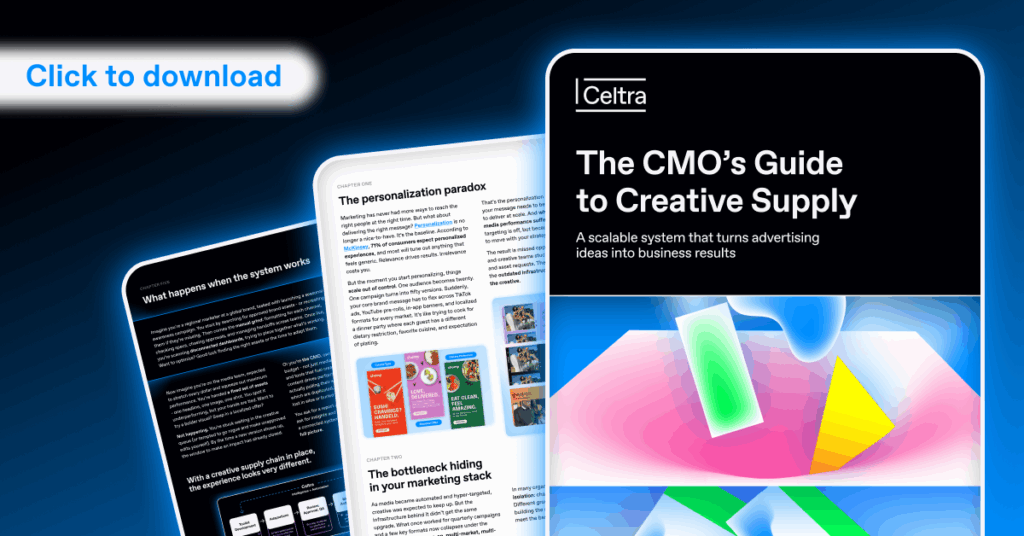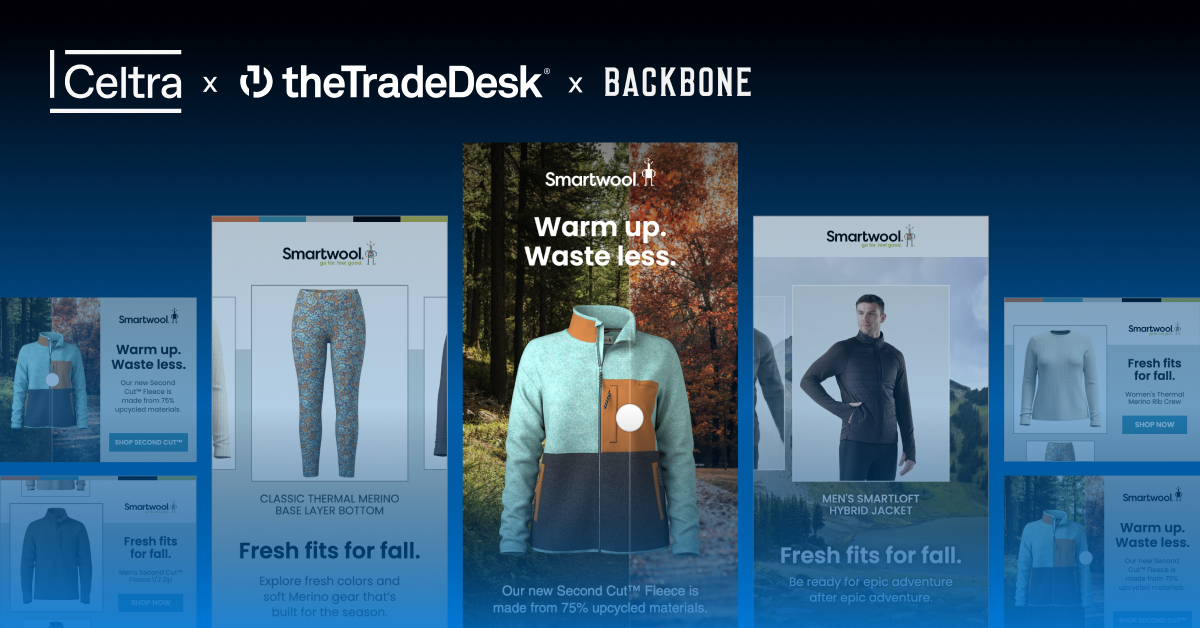You’ve perfected your media strategy. Targeting is sharp, spend is optimized, and reporting is more advanced than ever. So why are results still stalling?
It’s not the media, it’s the creative. Modern campaigns demand more content, delivered faster, across more platforms and markets. But creative operations remain slow, repetitive, and disconnected from the speed of modern media. Delays, bottlenecks, and waste pile up. Your media machine is only as fast as its slowest part, and for many teams today, that part is creative production.
When creative can’t keep up with strategy
Your audience expects personalized, relevant content every time. In fact, 71% of consumers expect personalized experiences and will ignore what feels generic (*). But as you move toward personalization, content production quickly becomes unmanageable.
A single campaign quickly expands into dozens of versions. One market becomes many. One message must flex across every format from TikTok to YouTube to display. Each of those versions must be reviewed, approved, and delivered without error. Creative teams are stretched thin, and performance marketers are left without the variety or flexibility needed to optimize results.

You may have the tools to target the right audience at the right time, but if the creative can’t match that pace, the message falls flat. This is the content gap, and it is holding your campaigns back.
Why traditional creative models no longer work
You may be solving the content gap problem the way many teams do, by adding more people to the process or using native tools from media platforms to speed things up. While these approaches offer some relief, they rarely scale with the demands of modern campaigns. Agency production hubs can handle volume, but they often increase coordination, cost, and complexity as needs grow. Native tools may help move faster within individual platforms, but they create fragmented workflows and limit flexibility across the broader campaign.
In both cases, the core problem remains. Without a connected system that ties creative to your strategy and performance goals, campaigns slow down, quality slips, and your teams end up doing more work without seeing better results.

Introducing the creative supply chain
There is a smarter way forward. One that treats creative not as a static output, but as a scalable, connected, and strategic system. This is the creative supply chain.
A creative supply chain connects creation, scaling, distribution, intelligence and governance into one continuous workflow. It gives teams the tools to produce more, without losing control or consistency. It brings clarity, speed, and flexibility to every step of the creative process. And it turns creative from a bottleneck into a business driver.

Leading brands are already shifting in this direction. They are building creative operations that work in sync with media, empower teams to produce at scale, and use real performance data to inform every decision. These operations are not just more efficient; they are more effective.
How Celtra powers the creative supply chain
Creative has become a constraint not because teams lack ideas, but because they lack the infrastructure to scale them. At Celtra, we built a creative-first system that brings structure, speed, and intelligence to the entire content lifecycle. From toolkits that let marketers create and adapt content without relying on design teams, to built-in intelligence that helps you adapt and optimize across every channel, everything works together in one connected workflow.
Want to explore how leading brands are making this shift? Dive deeper into the topic, get real examples, and see how your team can scale creative with speed, control, and brand consistency in our free whitepaper.
Frequently asked questions
A creative supply chain is a system that connects creation, scaling, distribution, intelligence and governance into one continuous workflow. It helps teams produce more content, more efficiently, while maintaining brand consistency and driving better results.
Most creative workflows are still manual, disconnected, and built for a slower pace of marketing. As demand for content grows, these outdated systems cannot scale, causing delays, wasted effort, and missed performance opportunities.
Celtra provides a centralized platform where teams can create, adapt, manage, and measure content at scale. The system connects creative tools, media delivery, and performance insights in one unified workflow.
A creative supply chain gives marketers the ability to launch and update content quickly while staying on brand. It reduces the back-and-forth with design teams and makes it easier to test, optimize, and scale campaigns across every channel.
Download the full whitepaper, The CMO’s Guide to Creative Supply, to dive deeper into how leading brands are transforming their creative operations. You will find real examples, frameworks, and strategies to make it work for your team.






